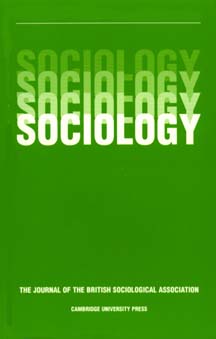No CrossRef data available.
INTIMACY TRANSFORMED? A CRITICAL LOOK AT THE ‘PURE RELATIONSHIP’
Published online by Cambridge University Press: 01 August 1999
Abstract
It has recently been claimed that a particular form of intimacy, ‘the pure relationship’ is increasingly sought in personal life. For a couple, ‘the pure relationship’ involves opening out to each other, enjoying each other's unique qualities and sustaining trust through mutual disclosure. Anthony Giddens (1992) postulates a transformation of intimacy in all personal relationships with radical consequences for the gender order. Popular discourse supports the view that heterosexual couples are more equal and intimate. However, stories of everyday lives told to researchers paint a very qualified picture. Much of personal life remains structured by inequalities. Gendered struggles with the gap between cultural ideals and structural inequalities result in a range of creative identity and relationship-saving strategies. More, perhaps much more, creative energy goes into sustaining a sense of intimacy despite inequality than into a process of transformation. Moreover, the rhetoric of ‘the pure relationship’ may point people in the wrong direction both personally and politically. It feeds on and into a therapeutic discourse that individualises personal problems and down-grades sociological explanations. In practice, intimacy remains multi-dimensional and for the contenders for successful heterosexual equality, acts of practical love and care have been more important than a constant dynamic of mutual exploration of each other's selves.
- Type
- Research Article
- Information
- Copyright
- © 1999 BSA Publications Ltd


